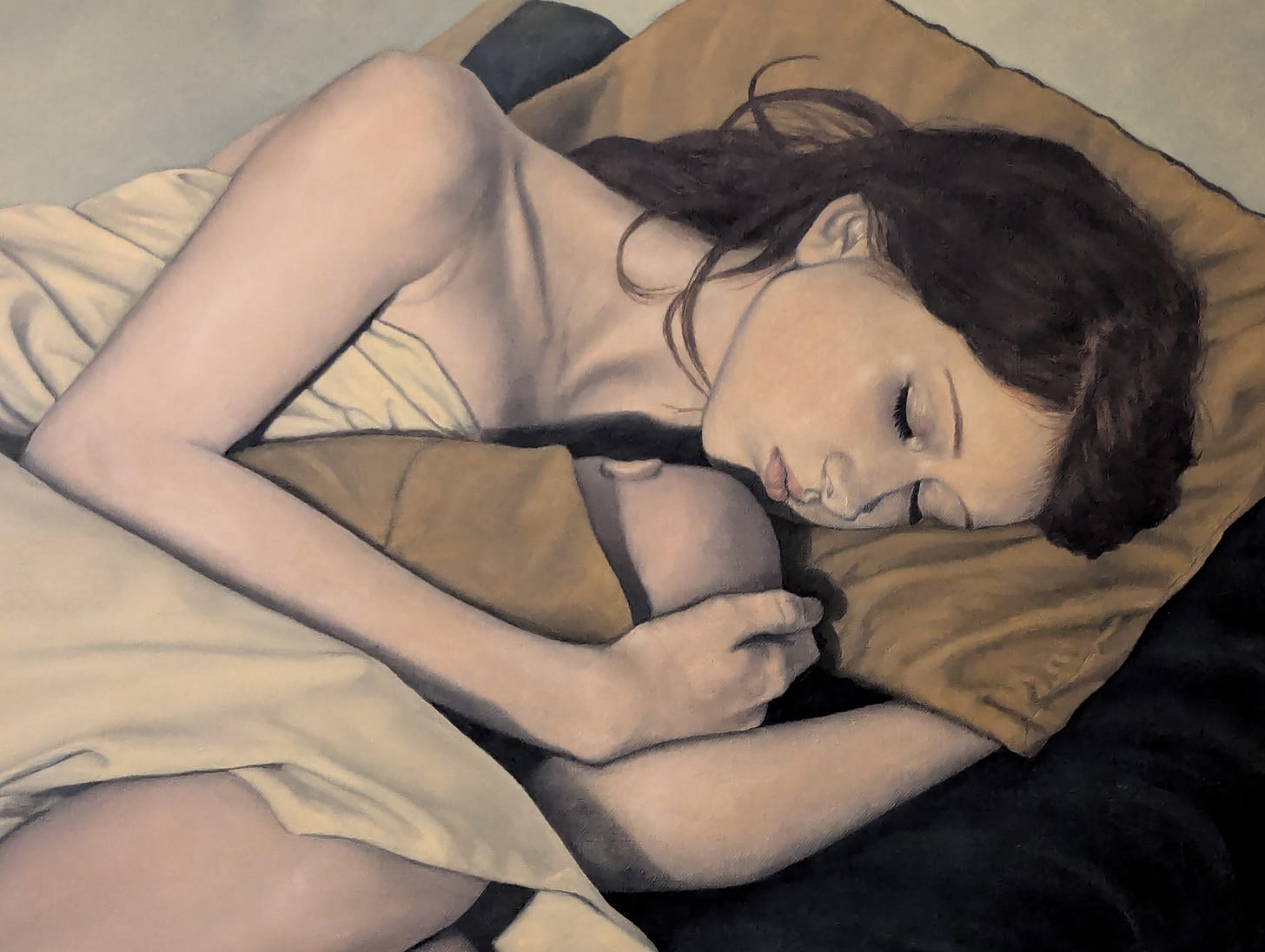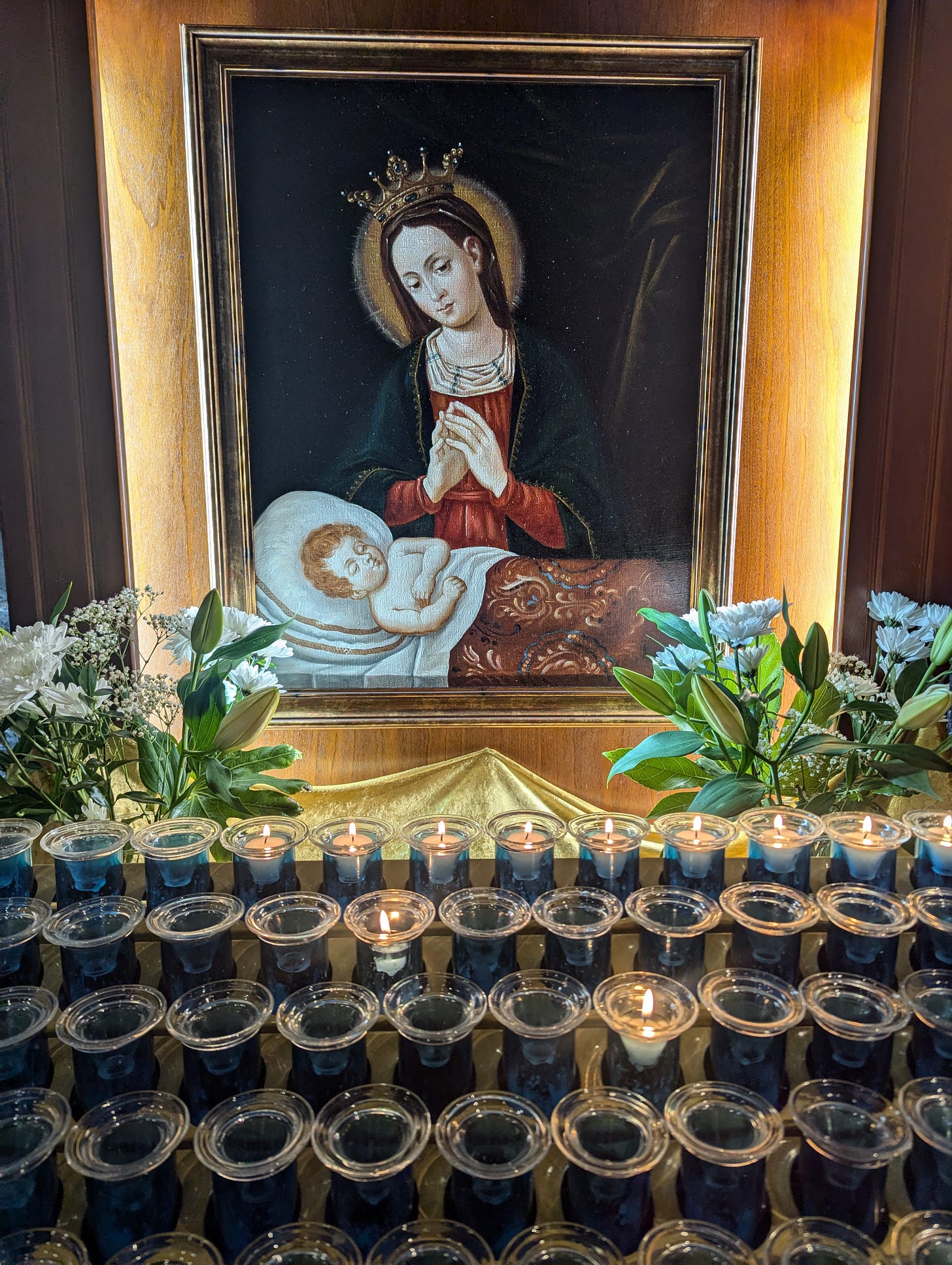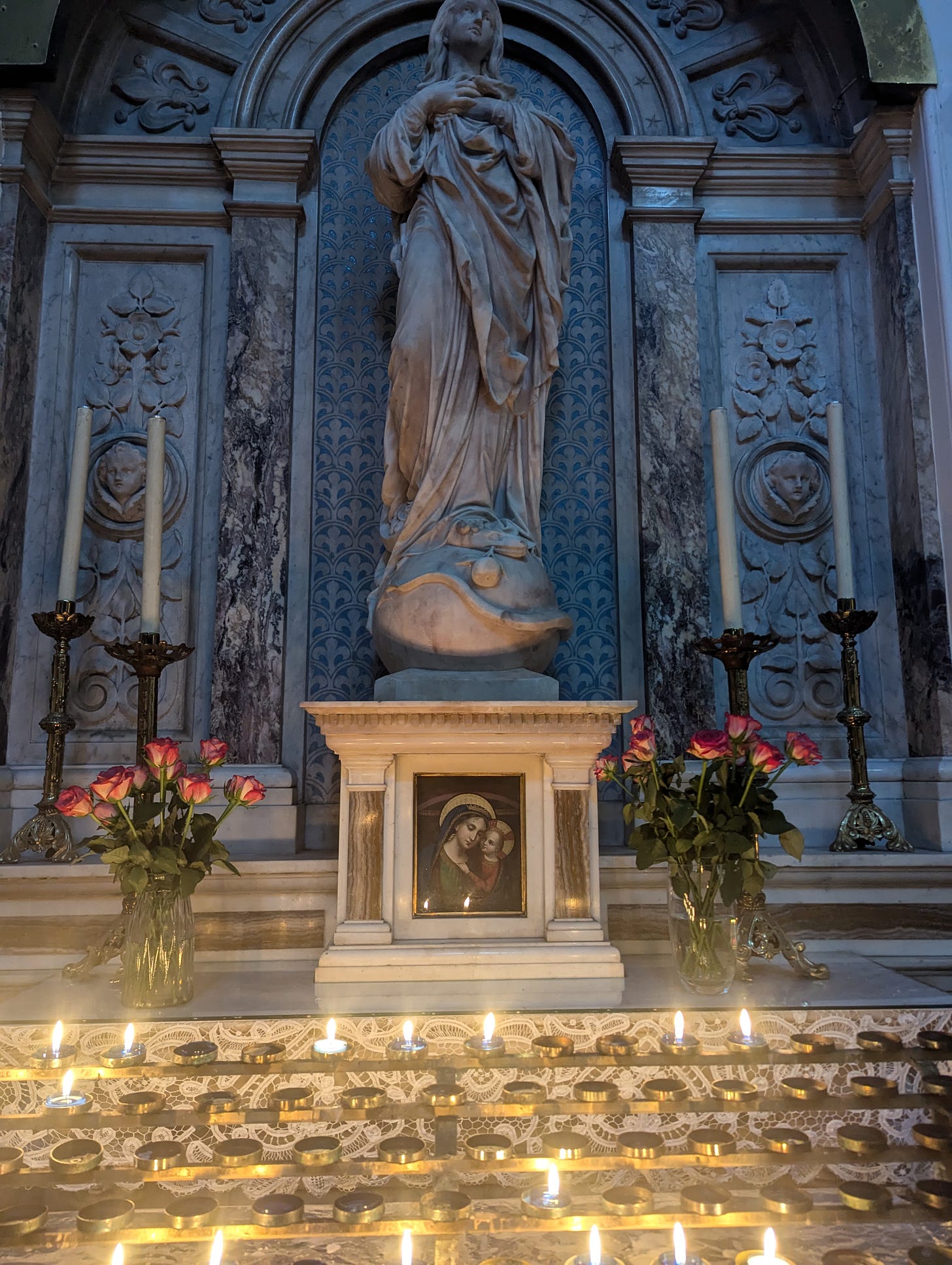In a tucked away side chapel of Galway Cathedral in Ireland there is an extraordinary painting.
It stands opposite a statue of St. Patrick, and around the corner from the odd inlaid mosaic of John F. Kennedy (the people of Galway were such Kennedy fans that the central “Eyre Square” was known as the “John F. Kennedy Memorial Park” for many years after his 1963 visit).
It is a modern portrait, painted by a figurative artist named Adam Pomeroy. It shows a vulnerable young girl wrapped in sheets, a small baby tucked close beneath her chin, the “C-curl” nursing mothers know so well.
Of this painting, Pomeroy writes,
“The painting is a depiction of Mary and the newborn Jesus.
In focusing on the mother and child, the intention is to bring to the force the human, emotive content of the scene.
For all that has gone before or will come after this moment, what we see is a new mother and her son.”
It is an image I had a hard time turning away from. Of course, it is beautiful. It is beautiful in the vulnerable, raw way all mothers and children are beautiful, but also in the specificity of this particular Nativity. As the poet, writer, and Catholic convert Sally Read writes in her book Annunciation,
“As a woman free from sin, she [Mary] did not feel the pains brought on by the Fall. That same tradition might make some think that she did not feel fear or grief under the cross. But she most certainly did feel fear and grief - after all, she was immaculate, not lobotomized. As a fully human person she experienced the full gamut of human emotion, without sin. We know she suffered worry as any mother would, when young Jesus was missing for three days (Lk 2:48). We can conclude that she felt pain under the cross. Sanctity, sadly, does not immunize anyone from pain.”
Immaculate, not lobotomized. A phrase I need to keep in mind when thinking about Mary. Mary who has often seemed pious and abstract and distant from me. But here in this painting, she is a young mother, her face soft and quiet in sleep, and yet… Is there a sense of dread in her fetal posture, a futile protectiveness as she holds her baby son so close to her body?
It is a simultaneously gentle and violent painting, a still moment of universality, beginnings, Nativity, before all that is to come - a moment we all share, in the murky, innocent origins of our first beginnings. And it is something all of us who have held a newborn baby know only too well - the fragility, and the fleetingness - the need, nevertheless, to hold your child close.
There is a far more well known painting in Galway Cathedral. When you leave this small side chapel you turn right and along this wall there is a portrait of Mary awash in candles. It is known as the Weeping Virgin Mother of Győr.
On St Patrick’s Day, March 17, 1697, something extraordinary happened in the Hungarian city of Gyor. A painting of the Virgin and Child, brought to the city 42 years previously by Bishop Walter Lynch, a member of the esteemed Lynch family of Galway, began to ‘weep copiously’ during Mass. Despite having been wiped clean with linen cloths (one of those cloths is still preserved ), it continued to exude ‘a bloody sweat’ for three hours. Hundreds of people witnessed the miracle, and astonished, wrote about it.
Joann Carroll Cruz1 relates the following: “Before long not only Catholics, but also Protestants and Jews flocked to see the miracle. Thousands witnessed the event, and many of these gave testimony of what they saw. A document signed by a hundred people bears the signatures of the governor of the city, its mayor, all its councilmen, the bishop, priests, Calvinist and Lutheran ministers as well as a Jewish rabbi. All volunteered their signatures to the document stating they had witnessed an undeniable miracle.”
The picture became known as ‘The Irish Madonna’, but perhaps more meaningfully as ‘The Consoler of the Afflicted.’2 The Madonna was returned to Ireland only this year after its Reformation era enforced exile.
The weeping Madonna of Ireland takes on deep significance when you think of the Irish people’s recent reckoning with a black period in Church history regarding the now infamous Mother and Baby homes that dotted the countryside. These were houses intended for women who became pregnant outside of marriage and shunned by their families (and the children’s’ fathers). They had nowhere else to go. These religious houses, primarily run by nuns, should have been houses of refuge, but instead often became places of abuse, tragedy, and untimely death. The Church, and society at large, completely and utterly failed these women and children.
One thing that surprised me in Ireland: the anti-Catholic sentiment is high. Perhaps not on an individual level - certainly a country with such a rich Catholic history has many traditions, rituals, and personal devotions, but there is a deep wound in Ireland. The Mother and Baby Homes are one such example, but there are many other examples of where the Church failed to serve its people.3
I think that the weeping Madonna, Consoler of the Afflicted, weeps for all these things. I think the silent Lady of the vision at Knock has no words for these things. And I think the vulnerability and open arms of motherhood in the images I saw of Mary are a direct answer to the Troubles, and to the ongoing violence in the world.
I saw Mary everywhere in Ireland. She dotted the roadside - shrines on sidewalks and in old stone walls. She peeped out from windowsills and fireplace mantels. And she soared above us in churches, Catholic and Reformed alike, a pillar of grace and compassion in a hurting world.
An increasingly secular country, with a Catholic past, haunted by Mary -
held, perhaps still, like the infant Jesus, very humanly, very gently, and very close.
130-132 of Joan Carroll Cruz’s book, Miraculous Images of Our Lady.
It is of course noted by historians that the weeping occurred in the year 1697 - the 17th century was a brutal time in Ireland. The Catholic Church was disestablished in favor of the ‘Church of England’ - with the King (not the Pope) heading the Church. The Civil War of 1644 in England brought Oliver Cromwell to power and incredible violence against Catholics. He arrived in Dublin in 1649 with a large army. He brutally crushed all opposition and proclaimed - ‘The Irish can go to Hell or to Connaught’ - implying forced relocation of any Irish Catholics that remained alive.
There are of course also many examples of the Church acting as a stalwart defender of the poor, not to mention preserver of culture - see the amazing book How the Irish Saved Civilization to get an idea of how Catholic monks deserve much credit for preserving priceless literature and art.





